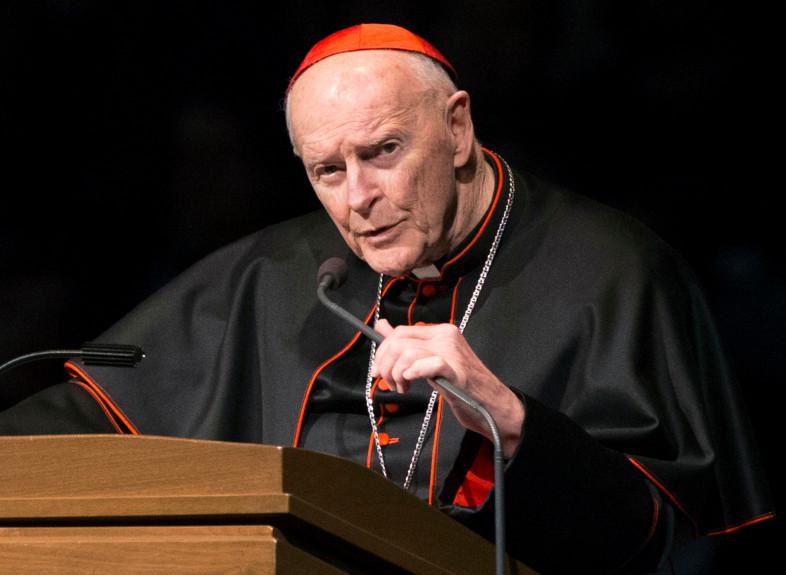|
The latest Catholic abuse scandal shows that nothing was ever resolved
By Steven Greenhut
I’m having a hard time understanding why the recent Pennsylvania grand-jury report dealing with the Roman Catholic Church’s child-rape scandal sparked so much shock and outrage. Indeed, the allegations contained in the report are shocking and outrageous. But, as someone who reported extensively on the issue in Southern California 10 to 15 years ago, I’m not surprised by the revelations. Obvious questions jump to mind. Why hasn’t the church, and the secular authorities responsible for filing criminal charges against abusers and rapists, done anything more substantive about the problem in the ensuing years? Why aren’t legions of priests – and the hierarchs who put protecting the church’s image above protecting its most vulnerable members – serving hard time in prison? We’ve known about this scandal for ages in all its gory detail, but for some reason little was done about it. The Pennsylvania report, released last month, referred to internal church documents suggesting that 300 predator priests had potentially thousands of victims. “Priests were raping little boys and girls, and the men of God who were responsible for them not only did nothing; they hid it all,” according to the grand jury. “For decades. monsignors, auxiliary bishops, bishops, archbishops, cardinals have mostly been protected; many, including some named in this report, have been promoted.” If there were thousands of victims in Pennsylvania, how many were there nationwide? The report detailed what amounted to a “playbook for concealing the truth.” As the Los Angeles Times reported, this included seven steps: “1) use euphemisms like ‘boundary issues’ instead of ‘rape’; 2) use fellow clergy to conduct investigations; 3) send problem priests to church-run treatment centers; 4) decline to say why abusive priests were removed; 5) provide housing and living expenses for predator clergy; 6) transfer problem priests to new dioceses; and 7) avoid reporting the priests to the police.” I saw that playbook in action in the Diocese of Orange County in the early 2000s. I remember when the diocese publicly praised (“an icon to the priesthood”) a priest who was accused of misconduct. I interviewed various sex-abuse victims, who talked about how they went to church leaders after the alleged attacks, but were treated as enemies rather than parishioners who were terribly wronged. The church has continually ushered in new eras of openness, but it’s mostly PR. “What happened in 2002 is the rhetoric changed,” said Newport Beach attorney John Manly, who has sued the Catholic Church over a number of abuse allegations. “But the toxic culture of pedophile enabling is alive and well in the hierarchy.” Lately, there’s the case of Cardinal Theodore McCarrick, who recently resigned from the college of cardinals amid sexual-abuse allegations. McCarrick denies the claims, but a former Vatican ambassador to the United States, Carlo Vigano, alleges that he warned Pope Francis about McCarrick’s dossier in 2013. Vigano called on the pope to resign. Pope Francis responded to the allegations only in a vague way, but it’s about time the scandal has slapped the church’s top leaders in the face. Surely, church officials have access to the Internet and could have read hundreds of well-reported stories about sex abuse allegations. They can see how the crisis turned one of the most devoutly Catholic nations, Ireland, into a hotbed of resentment. “If any place illustrates the depth and depravity of child sexual abuse in the Roman Catholic Church – and why the Irish are so angry about it – it is this unlikely corner of the country, where among rolling hills of wild heather, castles and bucolic fishing villages, predatory priests terrorized children with impunity for decades,” reported the New York Times, from a village in the County Donegal, where people say the scars from the church are worse than the ones from the I.R.A. Have they no conscience? Instead of spending so much money on publicity stunts and lawyers, perhaps the church hierarchy could have behaved like men of the cloth and cleaned out the bad actors within their organization. They could have worked with the police authorities. Instead, they issue flaccid new policies and directives which emanate from public-relations rather than spiritual concerns. For instance, U.S. Roman Catholic bishops just announced their newest plans to set up an abuse hotline. I recall something similar, from 2001 in the Diocese of Orange, which was part of a $5.2-million settlement. In 2004, then-Bishop Tod Brown announced a “Covenant with the Faithful,” modeled on Martin Luther’s nailing of seven theses to the Wittenberg door. It was a farce. By the way, the national John Jay study, which provided detail about the sexual abuse of minors by Catholic priests over decades, was released in 2004. So none of this is new. It’s always good for a new generation of Americans to learn about the way that institutions protect their own, but there’s little reason to believe that anything significant will change despite the Pennsylvania grand-jury revelations.
|
.
Any original material on these pages is copyright © BishopAccountability.org 2004. Reproduce freely with attribution.
